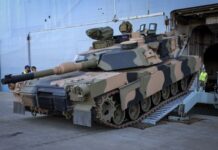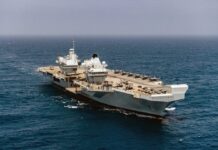
China’s Quest for Military Supremacy. By Joel Wuthnow and Phillip Saunders. Polity Press, 2025. 256 pages. $69.95
Joel Wuthnow’s and Phillip Saunders’s China’s Quest for Military Supremacy is a meticulously researched and timely analysis of the dramatic transformation of China’s People’s Liberation Army (PLA). The book offers a nuanced exploration of China’s military modernization, strategic ambitions, and the complex interplay between technological advancement and organizational culture.
It is a comprehensive resource for scholars and a lucid guide for general readers interested in understanding the shifting balance of military power in Asia.
At the heart of the book is a central thesis: While the PLA has become a far more capable and confident force, its evolution is marked by significant internal vulnerabilities that technology and funding alone cannot resolve. The authors argue that the PLA’s modernization has been patient and methodical, with a clear strategic focus on deterring US intervention, especially in the context of Taiwan. This strategic orientation has shaped every facet of China’s military reforms since the early 1990s and continues to drive the PLA’s priorities under Xi Jinping’s leadership.
The book provides a comprehensive overview of the PLA’s modernization which has resulted in the production and deployment of fifth-generation stealth fighters, prototype sixth-generation aircraft, advanced bombers, modern warships, and a growing fleet of submarines. This modernization has also enhanced the PLA’s ability to challenge US missile defenses with an array of modern long-range precision missiles and hypersonic glide vehicles. Perhaps most striking is the rapid expansion of China’s nuclear arsenal, which has grown from several hundred deployed warheads to more than 500, with projections exceeding 1,000 by 2030. Coupled with a move toward a “launch on warning” posture, this nuclear build-up may signal a new approach to strategic deterrence. Wuthnow and Saunders illustrate how the PLA’s modernization has been supported by a burgeoning domestic defense industry that can produce state-of-the-art systems and be less reliant on foreign technology.
Despite advances, the authors contend that the PLA still faces significant challenges. They persuasively argue that the PLA’s greatest weaknesses are not resource-based but structural. In essence, the PLA still operates under limited external oversight, with Xi standing as the sole civilian authority with any real influence. This concentration of power has led to persistent corruption and information distortion.
As a result, the PLA remains opaque and largely self-policing. Wuthnow and Saunders further contend that Xi’s prioritization of political loyalty over operational autonomy may strengthen Party control but undermines the decentralized decision making and innovation essential for modern warfare. Consequently, while this system reinforces internal discipline and Party oversight, it may ultimately impair the PLA’s ability to respond quickly and adaptively in a crisis or conflict.
Wuthnow and Saunders also situate the PLA’s rise within the broader context of regional and global power dynamics. Despite its impressive capabilities, the PLA remains a regional force, lacking the overseas logistics, command and control, and alliances that characterize a truly global military. The choice is deliberate, as China prioritizes dominance in its immediate environment over global reach. The book underscores how the PLA’s focus on “gray-zone” coercion—actions below the threshold of lethal force—allows China to shape its security environment without risking direct confrontation with the United States or its allies.
In its final analysis, China’s Quest for Military Supremacy offers a balanced and insightful assessment of the PLA’s strengths and limitations. It is a thoughtful, well-documented, and highly readable account of one of the most consequential military transformations of our time. Wuthnow and Saunders conclude that while the PLA is increasingly capable of coercive action against Taiwan and is on track to meet Xi’s ambitious modernization goals, its internal weaknesses and regional focus will continue to shape its trajectory. The book cautions against underestimating China’s military progress, but also against overstating its ability to project power globally. This balanced perspective is one of the book’s greatest strengths.
Keywords: military strategy, modernization and resourcing, force structure, diplomacy, People’s Liberation Army Disclaimer: Articles, reviews and replies, review essays, and book reviews published in Parameters are unofficial expressions of opinion. The views and opinions expressed in Parameters are those of the authors and are not necessarily those of the Department of War, the Department of the Army, the US Army War College, or any other agency of the US government. The appearance of external hyperlinks does not constitute endorsement by the Department of War of the linked websites or the information, products, or services contained therein. The Department of War does not exercise any editorial, security, or other control over the information readers may find at these locations.



